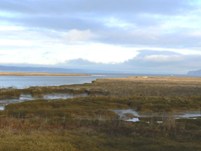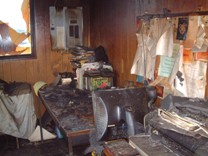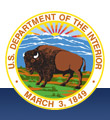 The U.S. Fish and Wildlife Service will invest $280 million in more than 830 projects through the American Recovery and Reinvestment Act of 2009 to build visitors centers, improve infrastructure, and bolster conservation at national wildlife refuges and hatcheries across the country.
The U.S. Fish and Wildlife Service will invest $280 million in more than 830 projects through the American Recovery and Reinvestment Act of 2009 to build visitors centers, improve infrastructure, and bolster conservation at national wildlife refuges and hatcheries across the country.
The list of projects includes $115 million for construction, repair and energy efficiency retrofit projects at U.S. Fish and Wildlife Service facilities, and $165 million for habitat restoration, deferred maintenance and capital improvement projects.
All the projects represent long-standing priority needs identified by the U.S. Fish and Wildlife Service through its capital planning process. The agency worked through a rigorous merit-based process to identify and prioritize investments meeting the criteria put forth in the Recovery Act: namely, that a project addresses the Department’s highest priority mission needs; generates the largest number of jobs in the shortest period of time; and creates lasting value for the American public.
 |
| An estuary restoration project funded by the Recovery Act at Nisqually NWR in Washington will help to recover listed Chinook salmon. Credit: USFWS |
 |
| The Recovery Act will help fund a project to design and construct permanent energy-efficient headquarters and visitors center at Keālia Pond National Wildlife Refuge after a fire destroyed the modular office at the refuge. |
The $280 million will go to programs including:
- Youth Employment
The American Recovery and Reinvestment Act will provide about $5 million to enable the Service to create about 550 seasonal and temporary jobs for young people on nearly 300 national wildlife refuges and national fish hatcheries across the country over the 18 months of the recovery program. These jobs will create career opportunities that enable youth in economically depressed areas to gain valuable job experience and consider careers in conservation. At the same time, the Fish and Wildlife Service will be able to complete vital work to help fulfill the agency’s conservation mission. - Energy Efficiency Retrofitting
Forty-three projects valued at nearly $8.4 million will make National Wildlife Refuges and National Fish Hatcheries more energy efficient and less reliant on non-renewable energy sources to support existing facilities. All projects deemed worthy of funding met three key criteria; they address the highest priority mission needs for the Service, they create the largest number of jobs in the shortest period of time, and create lasting value for the American public. - Infrastructure Improvement
A total of about $227 million will be devoted to construction or repair of over 650 constructed assets across the country. This funding will provide opportunities for employment at a wide variety of locations and make a major positive contribution for needed improvements to Fish and Wildlife Service facilities. - Habitat Restoration Projects
The U.S. Fish and Wildlife Service spend $50 million on 173 habitat restoration projects on public and private lands throughout the nation. The projects range from demolition of structures preventing fish from accessing spawning and feeding areas; reforestation projects; decreasing the impact of Service buildings on the surrounding environment; and removal of invasive plants. The vast majority of the projects occur on private lands, where landowners committed to managing their property for the benefit of native fish and wildlife have turned to the Service for financial and technical assistance.
Download a list of all U.S. Fish and Wildlife Service projects by state. ![]()






